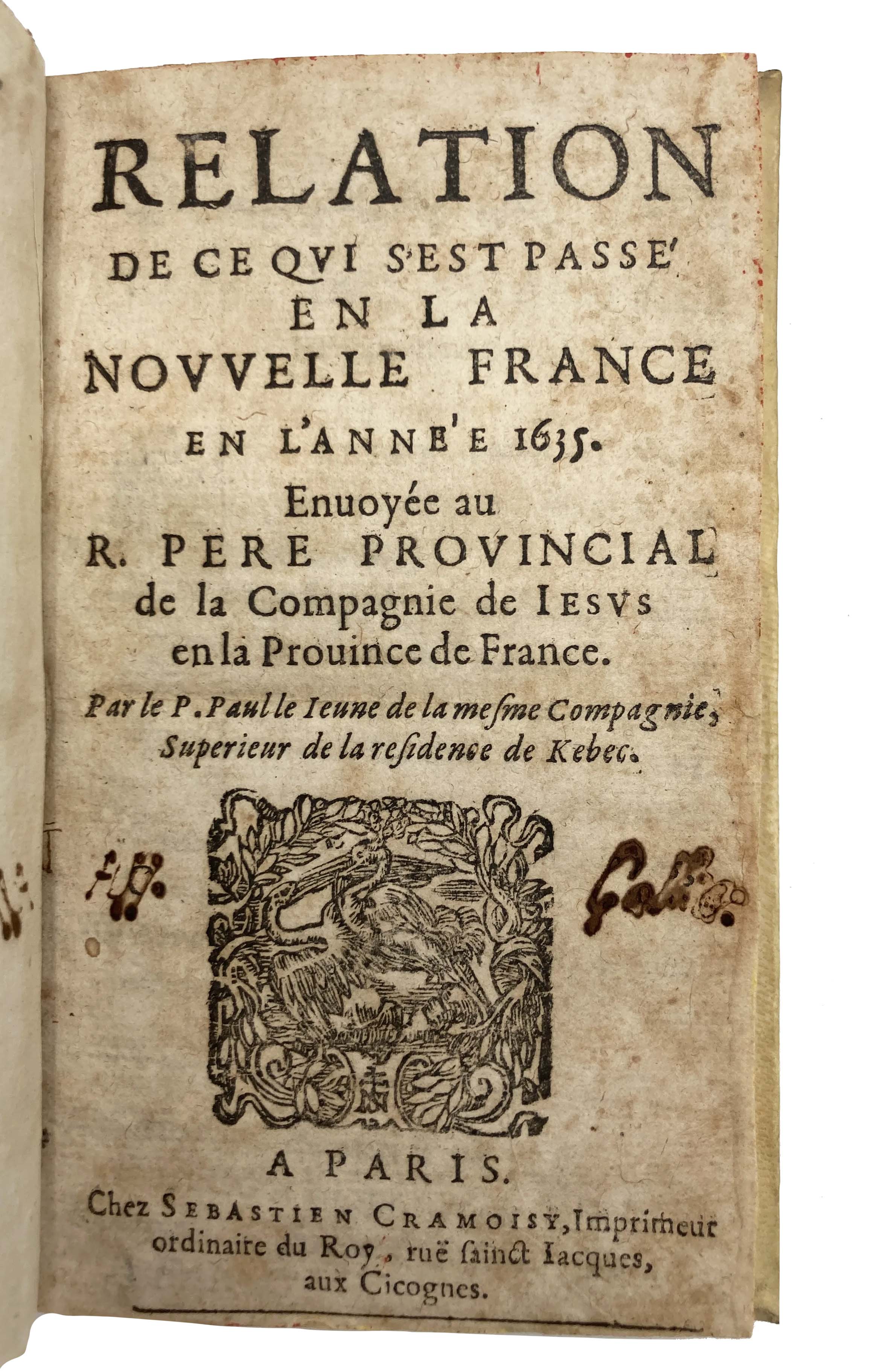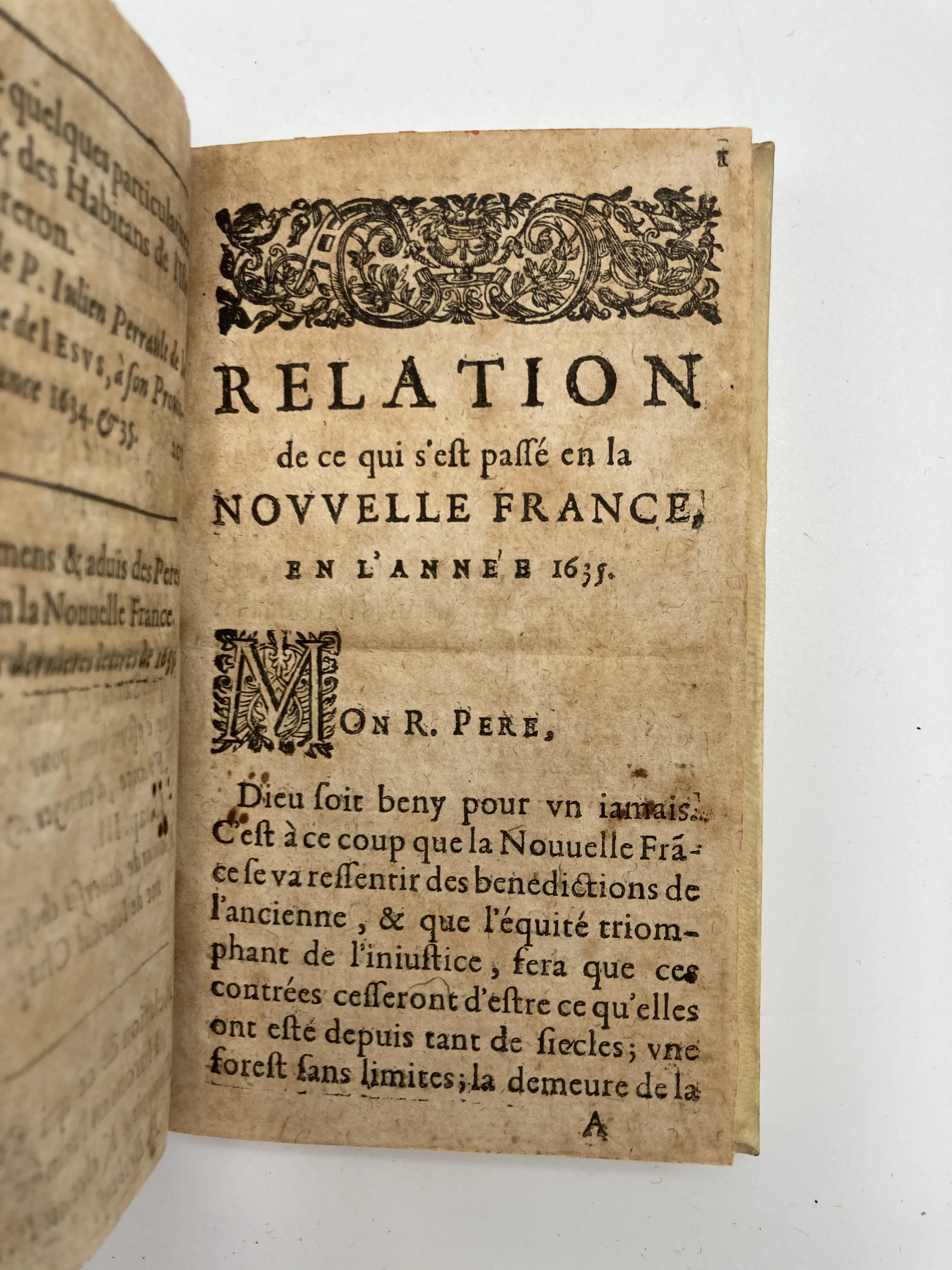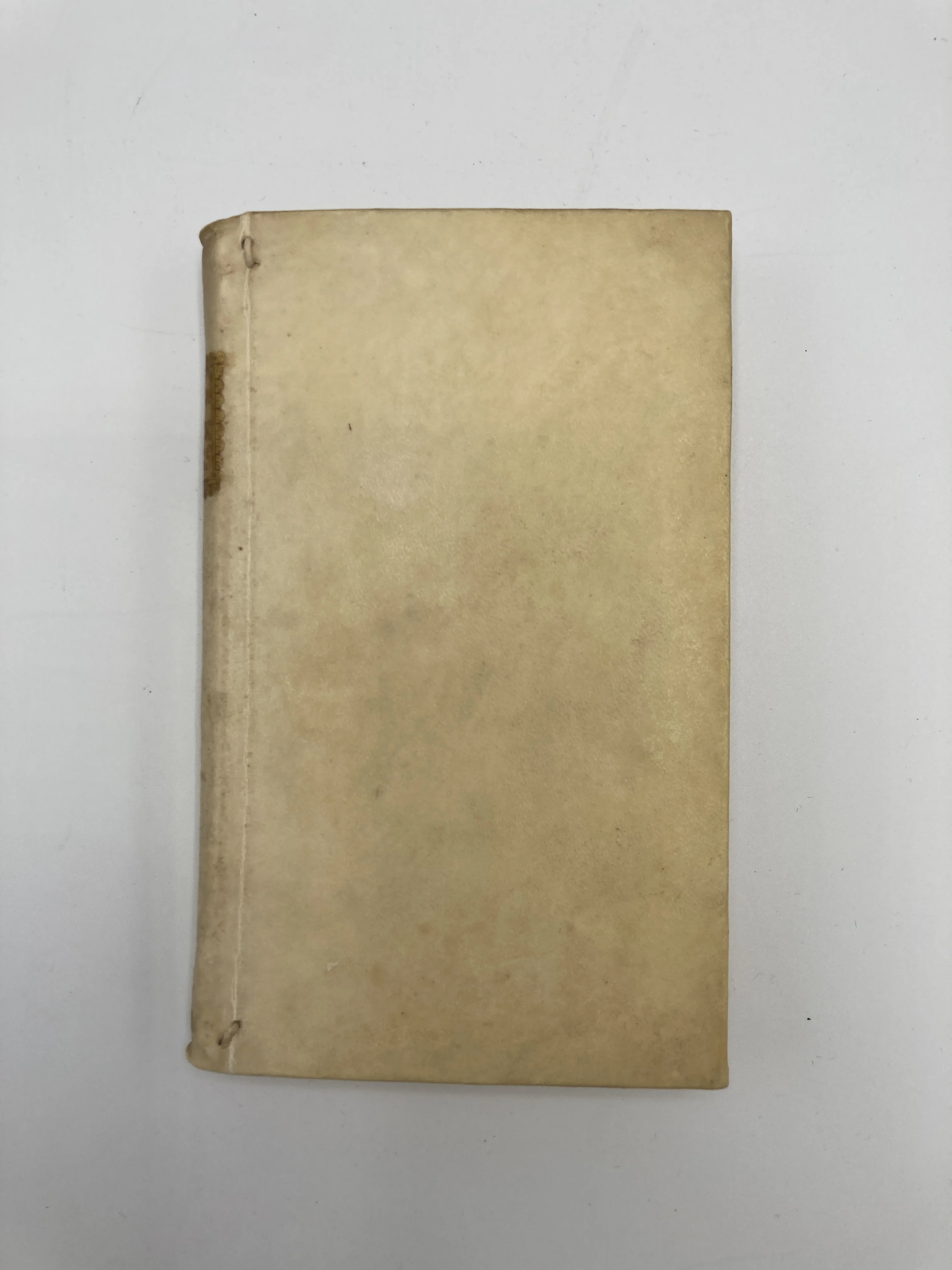LE JEUNE, Paul; BREBEUF, Jean de; PERRAULT, Julien.
Relation de ce qui s’est passe en la Nouvelle France, en l’anee 1635.
Paris, Sebastien Cramoisy, [1636]£25,000.00
FIRST EDITION. 8vo. pp. [2] 246 [2]. Roman letter, little italic. Printer’s device with storks to t-p, woodcut ornaments and historiated initials. 3 separate reports of 17<sup>th</sup> C French Jesuits in Canada on poor quality, age browned paper, some foxing, edges trimmed. Ink stains to ffep and first three leaves from contemporary signature either side of printer’s device, small marginal holes to first two. Contemporary vellum, title gilt to spine on morocco label, red sprinkled edges.
A unique source for the early Jesuit missions to New France, an area which at its peak stretched from the Gulf of St Lawrence to Louisiana. ‘This Relation contains three reports: the first by Le Jeune, dated 28th Aug. 1635, ending on p.112; the second from the Huron country by Brebeuf, pp.113-206; and the third from Cape Breton, by Perrault, pp.207-219’. It paints a picture of the French colonisation of New France, North America and Cape Breton, relations with the inhabitants, and local First Nation culture. The Society of Jesus was granted a monopoly over the proselytizing of local inhabitants and produced yearly written reports detailing their progress until 1672, which were sent to Quebec to be checked and subsequently published in Paris.
‘The initial method of Jesuit missionaries like Paul Le Jeune was often to erect small, isolated, sedentary villages, or reductions, wherein the Montagnais would be instructed in the ways of agriculture, animal husbandry, and Christianity’. Le Jeune (1591-1664), writes the first and longest account of the present works dated August 28th 1635. He had ample experience with the indigenous people, having wintered with the Montagnais, the most southerly group of the Innu tribe, between 1633-34. He discusses Jesuit attempts to ‘civilise’ and convert the so called ‘Sauvages’, describes the effects of disease on the settlers and the locals, and lists some of the perceived advantages of colonisation, such as the banishment of famine and expansion of the French empire. At the end of the letter, he writes in addition to his own name a list of Jesuits who have been living with him in Quebec.
In the following two letters, Jean de Brebeuf (1593-1649) details his experiences with the Huron tribe in the Northeastern Woodlands of North America and Julien Perrault (1602-1647) discusses the Mi’kmaq culture in Nova Scotia. All three authors describe the situation, climate, resources and local people, their reports highly anticipated in the French homeland. The tumultuous relationship with the locals is highlighted in the capture and murder of Brebeuf by the Haudenosanee in 1649. Appended is a short reflection of the Jesuits in New France, which contains a number of more general remarks as to the Jesuits’ experiences with the climate, the locals and their relationship with God.
A remarkable insight into early first-hand impressions of the northern parts of the American continent and 17th C travel to America.
USTC: 6034034; Church III: 434; ‘The Lords of Our Lands: 17th C Jesuit Missions in Canada and Native Perspectives from First Encounters to Conversion’ K. Exarhakos p.47’; Sabin: 39950; Alden: 636/40; not in Cox, LeClerck or Lande.In stock





